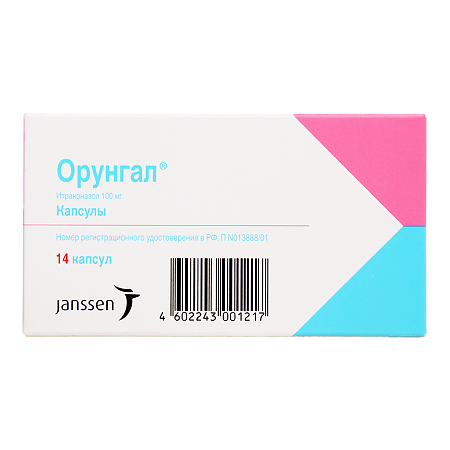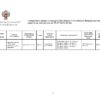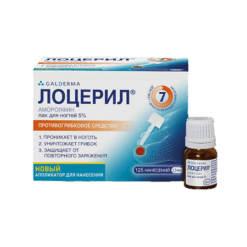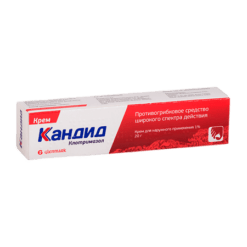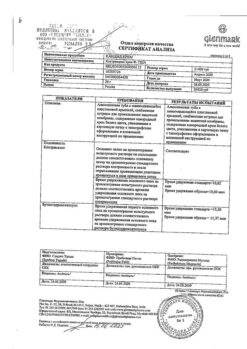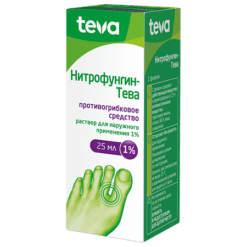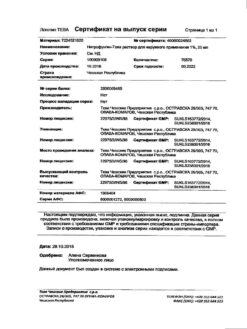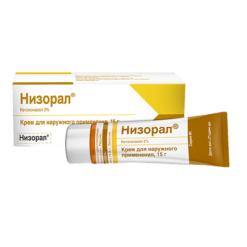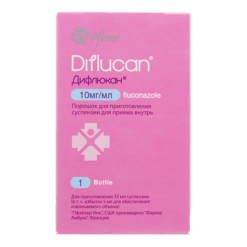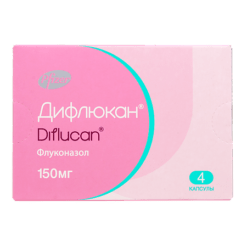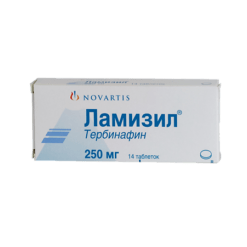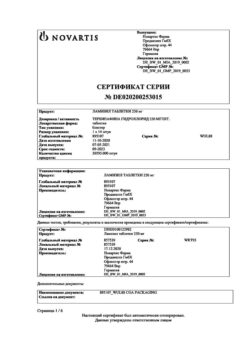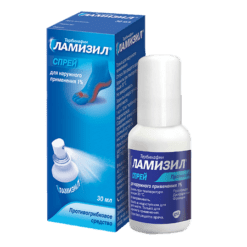No products in the cart.
Orungal, 100 mg capsules 14 pcs
€122.47 €102.06
Description
Orungal is a broad-spectrum antifungal drug, a triazole derivative. Itraconazole disrupts the synthesis of the cell membrane ergosterol of fungi, which determines the antifungal effect of the drug.
Itraconazole is active against infections caused by dermatophytes (Trichophyton spp., Microsporum spp., Epidermophyton floccosum); yeast and yeast-like fungi (Candida spp, including Candida albicans, Candida glabrata and Candida krusei, Cryptococcus neoformans, Pityrosporum spp, Geotrichum spp.); Aspergillus spp.; Histoplasma spp.; Paracoccidioides brasiliensis; Sporothrix schenckii; Fonsecaea spp.; Cladosporium spp.; Blastomyces dermatitidis; Pseudoallescheria boydii; Penicillium marneffei and others.
Candida glabrata and Candida tropicalis are the least sensitive Candida species to the action of itraconazole.
The main types of fungi whose development is not inhibited by itraconazole are Zygomycetes (Rhizopus spp., Rhizomucor spp., Mucor spp., Absidia spp.), Fusarium spp., Scedosporium spp., Scopulariopsis spp.
Indications
Indications
Treatment of mycoses caused by pathogens sensitive to the drug, including:
Active ingredient
Active ingredient
How to take, the dosage
How to take, the dosage
The capsules should be taken immediately after a meal, without chewing, swallowed whole and with a small amount of water.
The bioavailability of itraconazole when taken orally may be reduced in some patients with compromised immunity, such as patients with neutropenia, AIDS patients or patients with organ transplants. Consequently, doubling the dose may be necessary.
One course of pulse therapy consists of taking 2 capsules of Orungal twice daily (200 mg twice daily) for 1 week.
Two courses are recommended for the treatment of fungal lesions of the nail plates of the hands. For the treatment of fungal lesions of the nail plates of the feet 3 courses are recommended. The interval between the courses during which it is not necessary to take the drug is 3 weeks. Clinical results will become evident after the end of treatment, as the nail grows back.
In addition to pulse therapy, a continuous course is also possible. It is taken in 2 capsules a day (200 mg 1 time per day) for 3 months.
Orungal excretion from skin and nail tissue is slower than that from plasma. Thus, optimal clinical and mycological effects are achieved 2-4 weeks after the end of treatment for skin infections and 6-9 months after the end of treatment for nail infections.
Interaction
Interaction
1. medications affecting absorption of itraconazole.
Medicinal products that reduce gastric acidity reduce absorption of itraconazole, which is associated with the solubility of capsule shells.
2. Medicinal products that affect the metabolism of itraconazole.
Itraconazole is mainly cleaved by CYP3A4 enzyme. The interaction of itraconazole with rifampicin, rifabutin and phenytoin, which are powerful inducers of CYP3A4 enzyme, was studied. The study found that in these cases, the bioavailability of itraconazole and hydroxyitraconazole is significantly reduced, which leads to a significant reduction in the effectiveness of the drug. Concomitant use of itraconazole with these drugs, which are potential inducers of hepatic enzymes, is not recommended. Studies of interaction with other inducers of liver enzymes, such as carbamazepine, phenobarbital and isoniazid were not conducted, however, similar results can be assumed.
Strong CYP3A4 enzyme inhibitors, such as ritonavir, indinavir, clarithromycin and erythromycin, may increase the bioavailability of itraconazole.
3. the effect of itraconazole on the metabolism of other drugs.
Itraconazole may inhibit the metabolism of drugs cleaved by CYP3A4 enzyme. This may cause intensification or prolongation of their effects, including side effects. Before starting to take concomitant drugs, it is necessary to consult with the attending physician about the metabolic pathways of this drug, specified in the instructions for medical use. After discontinuation of treatment, plasma concentrations of itraconazole decrease gradually, depending on the dose and duration of treatment (see section “Pharmacokinetics”). This should be taken into account when discussing the inhibitory effect of itraconazole on concomitant medications.
Examples of such medications are:
Drugs that should not be prescribed at the same time as itraconazole:
Special Instructions
Special Instructions
Women of childbearing age taking Orungal® should use adequate contraception for the duration of treatment until the first menstrual period after completion.
In a study of the dosage form of Orungal® for IV administration in healthy volunteers, a transient asymptomatic decrease in left ventricular ejection fraction was observed that normalized before the next infusion of the drug.
The clinical significance of the findings for oral dosage forms is unknown.
Itraconazole has been found to have a negative inotropic effect. Caution should be exercised when concomitant administration of itraconazole and BCAAs, which may have the same effect. Cases of congestive heart failure associated with taking Orungal® have been reported. Orungal® should not be taken in patients with chronic heart failure or with a history of this disease unless the possible benefit significantly exceeds the potential risk. Factors such as severity of indications, dosing regimen, and individual risk factors for congestive heart failure should be taken into consideration when evaluating the benefit-risk ratio on an individual basis.
Risk factors include the presence of conditions such as CHD or heart valve lesions; obstructive pulmonary lesions; and renal failure or other conditions accompanied by edema. Such patients should be informed about the signs and symptoms of congestive heart failure. Treatment should be performed with caution, and the patient should be monitored for the occurrence of symptoms of congestive heart failure. If they occur, Orungal® should be discontinued.
In reduced gastric acidity: in this condition, the absorption of itraconazole from Orungal capsules is impaired. Patients taking antacids (e.g. aluminum hydroxide) are recommended to use them not earlier than 2 hours after taking Orungal capsules®.
Patients with achlorhydria or who use H2-histamine receptor blockers or proton pump inhibitors are recommended to take Orungal capsules® with cola.
In very rare cases, severe toxic liver damage, including cases of acute hepatic failure with fatal outcome, has developed when using Orungal®. In most cases, this was observed in patients who already had liver disease, in patients with other severe diseases who received itraconazole therapy for systemic indications, as well as in patients who received other drugs with hepatotoxic effect. Some patients had no obvious risk factors for liver damage. Several such cases occurred in the first month of therapy, and some in the first week of treatment. In this regard, it is recommended to regularly monitor liver function in patients receiving itraconazole therapy.
Patients should be warned to contact their physician immediately if symptoms suggestive of hepatitis occur, such as anorexia, nausea, vomiting, weakness, abdominal pain and darkened urine. In case of appearance of such symptoms it is necessary to stop therapy immediately and conduct liver function tests.
Patients with elevated liver enzymes or active liver disease or who have experienced toxic liver injury while taking other drugs should not be treated with Orungal® unless the expected benefit justifies the risk of liver damage. In these cases, liver enzyme levels should be monitored during treatment.
Hepatic disorders: Itraconazole is metabolized mainly in the liver. As the total T1/2 of itraconazole is slightly increased in patients with liver dysfunction, it is recommended to monitor the concentrations of itraconazole in plasma and adjust the dose of the drug, if necessary.
Renal disorders: since in patients with renal insufficiency the total T1/2 itraconazole is slightly increased, it is recommended to monitor the plasma concentrations of itraconazole and adjust the dose of the drug, if necessary.
Patients with immunodeficiencies: bioavailability of itraconazole in per oral administration may be reduced in some patients with impaired immunity, such as patients with neutropenia, patients with AIDS or patients who underwent surgery for organ transplantation.
Patients with systemic fungal infections that are life-threatening: Because of the pharmacokinetic characteristics of Orungal® as a capsule is not recommended for initiating treatment of systemic mycoses that are life-threatening to patients.
AIDS patients: The treating physician should evaluate the need for maintenance therapy in AIDS patients previously treated for systemic fungal infections such as sporotrichosis, blastomycosis, histoplasmosis, or cryptococcosis (both meningeal and nonmeningeal) who are at risk for relapse.
The clinical data on the use of Orungal capsules® in pediatric practice are limited. Orungal® capsules should not be administered to children unless the expected benefit exceeds the possible risk.
The treatment should be discontinued if peripheral neuropathy occurs, which may be associated with taking Orungal capsules®.
There are no data on cross-sensitivity to itraconazole and other azole antifungal drugs.
Contraindications
Contraindications
With caution: the drug should be prescribed in patients with liver cirrhosis, chronic renal failure, chronic heart failure, hypersensitivity to other drugs of the azole group, as well as in children and elderly patients.
Side effects
Side effects
Immune system disorders: very rare – anaphylactic, anaphylactoid and allergic reactions.
Metabolic disorders: very rare – hypokalemia.
Nervous system disorders: very rare – peripheral neuropathy, headache, dizziness.
Cardiovascular system disorders: very rarely – congestive heart failure.
Respiratory system: very rare – pulmonary edema;
Gastrointestinal system: very rare – abdominal pain, vomiting, dyspepsia, nausea, decreased appetite, diarrhea, constipation.
Hepatobiliary system disorders: very rarely – severe toxic liver damage (including several cases of acute liver failure with lethal outcome), hepatitis, reversible increase in liver enzymes.
Skin and subcutaneous fatty tissue disorders: very rarely – Stevens-Johnson syndrome, angioedema, urticaria, alopecia, photosensitivity, rash, itching.
Reproductive system disorders: very rarely – disruption of the menstrual cycle.
General disorders: very rare – edema syndrome.
Overdose
Overdose
No cases of overdose of the drug Orungal have been reported.
Treatment: In case of accidental overdose, gastric lavage should be performed within the first hour after taking the drug and, if necessary, activated charcoal should be prescribed.
Itraconazole is not excreted by hemodialysis. There is no specific antidote.
Similarities
Similarities
Additional information
| Shelf life | 3 years |
|---|---|
| Conditions of storage | At a temperature of 15-30 °C. Keep out of the reach of children. |
| Manufacturer | Janssen Pharmaceuticals N.V., Belgium |
| Medication form | capsules |
| Brand | Janssen Pharmaceuticals N.V. |
Related products
Buy Orungal, 100 mg capsules 14 pcs with delivery to USA, UK, Europe and over 120 other countries.

